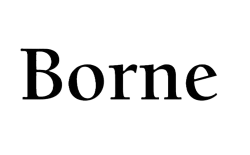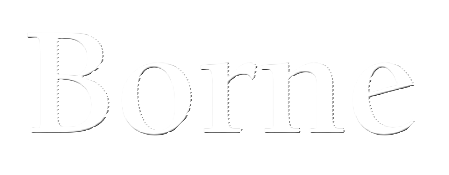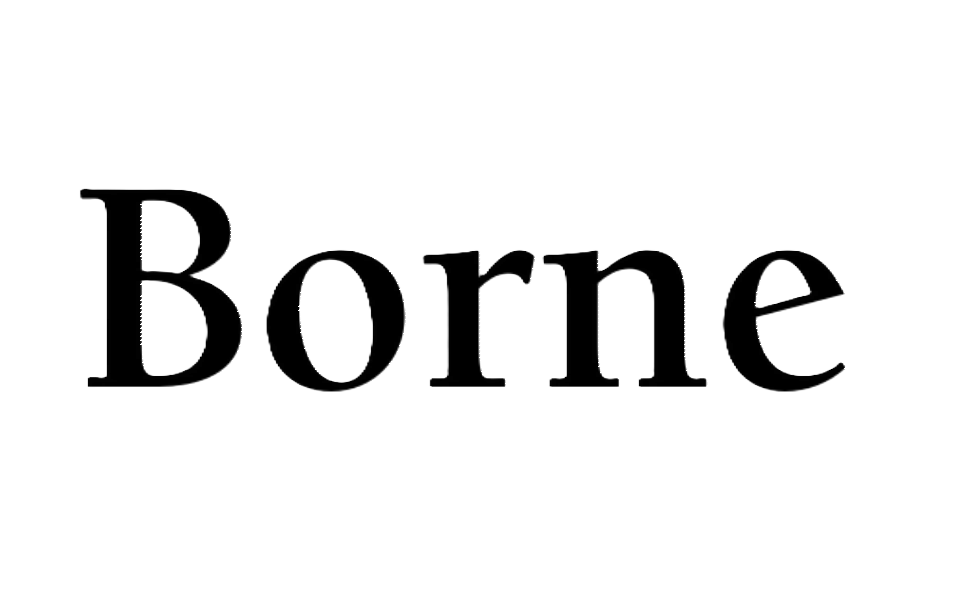
Learn Dutch: 10 Key Words, the Alphabet & Essential Grammar
Are you ready to learn Dutch? Still deciding if you want to learn Dutch? Either way, this guide is for you, as we’ll cover the basics to help get you started or help you make a decision. We’ll start with how Dutch fits into the global language learning picture, and how difficult it is to learn Dutch (hint: not bad if you’re an English or German speaker!). We’ll then show walk through some key Dutch vocabulary and important grammar topics. As we add new content on Dutch language learning, we’ll be constantly updating this guide with links to other relevant posts with a goal to make this the best place to get started learning Dutch online!
Your First Step to Speak Dutch Fluently like a Local
So, you’ve decided you want to start to learn Dutch — let’s go! Maybe you’ve always wanted to cycle through the streets of Amsterdam, chat with locals over a stroopwafel or just speak a new language. Well, the Dutch language is a gateway to a rich culture and history. You’ve taken the first step, you’ve made the decision! At Borne, we’re all about making language learning fast, fun and immersive — and Dutch is the perfect language to get started with. In this post, we’ll walk you through Dutch basics. The history of Dutch, its alphabet, key phrases, similarities to other languages and just how tricky (or not!) the language is to learn!
The Origins of the Dutch Language
Where did Dutch come from? Dutch is actually a West Germanic language that evolved from Old Frankish around the 8th century. Dutch began to take shape in the Low Countries, a region in Europe that includes modern-day Netherlands and Belgium.
Over time, the West Germanic language developed different dialects that were influenced by the Frankish tribes and other Germanic peoples. These gradually diverged from their West Germanic relatives. By the time that the Middle Ages came around, there was a rise of trade and cultural exchange in the region. During this period, Dutch evolved into a recognizeable language, setting the stage for its later prominence during the Dutch Golden Age. Dutch really emerged globally during the Dutch Golden Age in the 17th century when the Netherlands became a global powerhouse in trade, art and innovation.
Think Rembrandt, windmills and tulips!
Dutch is now spoken by 24+ million people today, primarily in the Netherlands. It’s also spoken in Belgium (where it’s called Flemish) and the country of Suriname in South America.
Today, Dutch is still influenced by its neighbors and its colonial past. It’s closely tied to English and German, which makes it an exciting starting point for those native English and German speakers wanting to become polyglots, as you benefit from a long list of cognates! Did you know Dutch gave English words like cookie (from koekje) and yacht (from jacht)? Other words that will be familiar are dollar (from daler), cucumber (from komkommer) and landscape (from landschap).
With so many familiar words, Dutch language learning is just a lot less overwhelming for English speakers!
Languages Similar to Dutch: English, German and Afrikaans
So, yes, if you speak English or German, you’ve already got a head start! Dutch sits between these two languages in the Germanic family tree. Here’s what you need to know…
For English, Dutch and English have a surprising amount of overlap, as we discussed in the previous section. Words like appel (apple), boek (book) and huis (house) feel familiar, right? Sentence structure is also similar, like the subject-verb-object order (e.g., “I eat bread” = Ik eet brood).
Dutch also borrows a lot from German, especially when it comes to vocabulary and grammar. This shouldn’t come as much of a surprise, given the West Germanic origins of the Dutch language. For example, vater (father in German) becomes vader in Dutch.
Then, there’s Afrikaans, which is spoken in South Africa. Afrikaans evolved from 17th-century Dutch. It’s so similar that speakers of Afrikaans and Dutch can often understand each other with minimal effort. For example, “How are you?” in Dutch is Hoe gaat het met jou?, while it’s Hoe gaan dit met jou? in Afrikaans.
How Hard is Dutch to Learn?
Here’s a popular question when it comes to Dutch language learning. Is Dutch hard to learn? Well, good news! For English speakers, it’s actually one of the easiest languages to learn. The U.S. Foreign Service Institute ranks it as a Category I language, which means it’s estimated to take 24 to 30 weeks (600–750 hours) to become proficient in Dutch. This is way less time than languages like Mandarin or Arabic. Curious how to learn Dutch fast? Check out our guide on 7 Ways to Learn a New Language Fast with AI.
The Dutch Alphabet
Here’s some more good news! Dutch uses the same 26-letter Latin alphabet as English! When you learn Dutch, there’s no need to have to deal with new characters, like in Russian or Arabic. However, there is a little twist — Dutch includes the digraph (pair of characters) ij (pronounced like “eye”), which is often treated as a single letter in traditional contexts. For example, ijs (ice) is an example of this in action.
Yes, you will see that some accents do pop up (e.g., café), but they’re rare and mostly borrowed from French. For pronunciation, don’t worry — practice makes perfect, and working with the Borne platform and its pronunciation feature can help you master these nuances fast. For more detail on the Dutch alphabet with a pronunciation guide for beginners, check out Dutch Alphabet: Master 26 Letters and Unlock Dutch.
10 Essential Dutch Words and Phrases to Get You Started
Let’s get started with some key phrases you need to know to start your Dutch journey. Here are 10 key words and phrases that will help you understand Dutch pronunciation a bit better!
Hallo [HAH-loh] – Hello
“Hah” like “ha” in “haha,” and “loh” like “low” but shorter.
Dank je [DAHNK yuh] – Thank you
“Dahnk” rhymes with “donk” (like “donkey” without “ey”), and “yuh” is a quick “you.”
Hoe gaat het? [HOO KHAHT ut] – How are you?
“Hoo” like “who,” “khaht” with a guttural “kh” (like clearing your throat), “aht” like “hot,” “ut” like “ut” in “utter.”
Ja [YAH] – Yes / Nee [NAY] – No
“Yah” like “ya” in “yahoo.” “Nay” like “nay” in English (saying no).
Tot ziens [TOT ZEENS] – Goodbye
“Tot” like “tot” in “total,” “zeens” like “zeen” (rhymes with “seen”) with a soft “s” at the end.
Ik heet… [ICK HAYT] – My name is…
“Ick” like “ick” in “sick,” “hayt” like “hate” but with a shorter “t.”
Alsjeblieft [AHLSS-yuh-BLEEFT] – Please
“Ahlss” like “alls,” “yuh” is a quick “you,” and “bleeft” rhymes with “lift” but with a “b” and a soft “t.”
Sorry [SOR-ree] – Sorry
“Sor” like “sore,” “ree” like “ree” in “free.” (Pretty close to English, but with a slightly rolled “r”!)
Wat is dat? [WAHT iss DAHT] – What is that?
“Waht” like “what” but shorter, “iss” like “is” with a sharp “s,” “daht” like “that” but with a clear “d.”
It’s worth noting that Dutch has some unique sounds (like the guttural “g” in “gaat”). You’ll get a better feel once you listen to Dutch in the Borne app, engage with a native Dutch speaker or watch Dutch on Netflix. And, remember that Borne’s pronunciation features will help you get better with each try!
Dutch Word Order Explained
Word order is one of the first grammar hurdles you’ll encounter when you learn Dutch, and it’s worth mastering early because it’ll impact every sentence you write or speak. In the main clause, Dutch is quite similar to English. You’re going to have a a Subject-Verb-Object pattern, just like English.
But, there’s a twist. The verb always will occupy the second position in the sentence. If you take a simple sentence like Ik lees een boek (I read a book), then, yes, it’s straightforward enough.
But, then let’s go ahead and toss in an adverb, like snel (quickly), and the sentence will be Ik lees snel een boek (I quickly read a book), with lees still holding that second slot. Time expressions often operate this way too, like Ik lees morgen een boek (I read a book tomorrow).
As soon as you work with a subordinate clause though, the rules change, and the verb gets pushed to the end of the sentence! For example, omdat ik een boek lees (because I read a book). This “verb-second” in main clauses and “verb-final” in subordinate clauses dynamic can feel like a mental juggling act at first.
But, with practice, it’ll become second nature. It’s the backbone of Dutch sentence structure, so nailing it early will make your writing sound polished and authentic.

How Do Articles Work in Dutch?
You’re also going to want to understand early on how articles work in Dutch. They might look straightforward, but there’s a bit of a twist that can catch Dutch learners off guard if they’re not prepared. Let’s explore how articles work, why they’re needed, and how you should get comfortable with them.
Dutch splits articles into two categories, a lot like English. There are definite articles, which are similar to “the,” and there are indefinite articles, which are similar to “a” or “an.”
Alright, so definite articles in Dutch are de and het. You’re going to use de for some nouns, like de hond (the dog) or de kat (the cat). It will also cover the plural version of these nouns, so you’ll be using de honden (the dogs) when you refer to the dogs. Meanwhile, het is used with other nouns, like het huis (the house) or het boek (the book). Here though, the plural versions of these nouns switch to de, as in de boeken (the books).
For indefinite articles, it’s a bit simpler. In Dutch, een is used as an indefinite article for singular nouns. So, you’d say een hond (a dog) or een huis (a house). And, there’s actually no indefinite article used when you get to the plural version of a noun — you’re just making it “honden” (dogs).
With articles, what you really need to learn is when to use “de” versus “het” when it comes to definite articles. As discussed, it depends on the noun, and there aren’t always obvious rules. To learn this, we think you need to just start by learning nouns together with their articles. So, don’t just memorize “huis,” but remember it as “het huis.” Here, it just comes down to practice and consistency.
Listening to Dutch, whether engaging with an AI Dutch tutor like Borne or watching Dutch YouTube videos, will help you learn what’s right! Articles are an important building block when you want to learn Dutch. Learn the Dutch articles early, and your sentences will feel smoother and more natural.
How to Conjugate Dutch Verbs
Beyond word order and articles, let’s get the basics down on how to conjugate verbs in Dutch. You’re going to need to conjugate verbs based on the subject and tense. Take a verb like lopen (to walk). In the present tense, it’s going to adjust depending on who’s doing the walking.
For ik (I), it’s just loop —you drop the -en and tweak the stem. For jij (you, singular informal) or hij/zij/het (he/she/it), you’ll add a -t, making it loopt.
For wij (we), jullie (you all) or zij (they), it’s lopen, keeping the full form. So, you’d say Ik loop naar huis (I walk home), Hij loopt snel (He walks fast), or Wij lopen samen (We walk together). Alright, nothing too crazy.
The conjugation of the Dutch verb lopen looks like the conjugation of other regular verbs. Take wonen (to live). You’ll hear ik woon (I live), which drops the -en and adjusts the stem, while jij woont or hij woont (you live, he lives) adds the -t, and wij wonen (we live) keeps the full form. So, yes, just like lopen. It’s a straightforward system once you get the hang of it, and it applies to most regular verbs.
The past tense and participles add another layer to the mix. Regular verbs like werken (to work) will follow a pattern. For example, ik werkte (I worked) is for the simple past, while ik heb gewerkt (I have worked) is for the perfect tense. Here, the perfect tense uses hebben (to have) as a helper.
Other regular verbs like praten (to talk) follow that similar pattern. Just like you have with ik werkte and ik heb gewerkt, you’d say ik praatte (I talked) for the simple past and ik heb gepraat (I have talked) for the perfect tense. You can see the consistencies, with the -te ending in the past and the ge- prefix in the participle.
Some conjugations, though, are irregular—like lopen becomes liep (walked) and gelopen (walked) in the past and participle forms — here, you’ll just need to memorize those and this just takes practice.
Proper conjugation is of course going to pull your sentences together, showing who’s acting and when. It’s not enough to know the words. You need them to fit the context. Practice by forming sentences with different subjects and tenses in the Borne app, and, before you know it, it’ll feel second nature.
Practical Tips to Learn Dutch Fast
Alright, so, you’ve got the basics — some history, the alphabet, a couple of phrases and a few grammar essentials. But, how do you actually start learning Dutch?
Here are some actionable tips to learn how to speak Dutch fluently.
Ok, we know we might be a little biased here, but we really believe that if you want to learn Dutch fast, you need to learn Dutch with AI. Our tendency is to wait until we’ve really grasped a language before we try to start speaking it, but watch a two or three year old. They just get started.
Just say Hallo or Dank je to yourself right now. Then, start working with an AI Dutch tutor like Borne to regularly practice and hone your Dutch conversation skills.
But, how do I learn Dutch grammar? Don’t I need to memorize a ton of rules? Sure, but you’re going to retain the rules by doing it, messing up, getting feedback and doing it again.
When you speak Dutch in the Borne app, you’ll get real-time Dutch grammar feedback when you want it. And, when you speak in the Borne app, you’ll receive immediate feedback on your Dutch pronunciation.
Dutch sounds like “g” or “ij” can feel tricky, but tools like Borne’s Dutch pronunciation assessment tool can help you master them fast. Watch your Dutch pronunciation improve in seconds.
Oh, and just enjoy yourself. Listen to some Dutch music (Douwe Bob or Ilse DeLange) or watch a Dutch show (check out Undercover on Netflix). You’ll be ordering een biertje (a beer) in no time!
These steps don’t require a huge time commitment — just consistency. Spend a little time each day! We talk about how a short windows add up in Why You Learn a Language 6x Faster with AI.
Your Dutch Adventure Starts Now
When you learn Dutch, you open a door to a vibrant world in the Netherlands and beyond. With its ties to English, straightforward alphabet and approachable grammar, Dutch is the perfect place to start your language learning journey. Whether you’re drawn by the prospective travel, culture or just the thrill of something new, you can now learn Dutch fast with the Borne app.
So, grab een koffie, say ja to the challenge, and let’s get started. Use the tips, practice the phrases and let tools like Borne accelerate your Dutch language learning. Before you know it, you’ll be chatting with locals, cracking Dutch jokes and maybe even dreaming in Dutch. Tot ziens for now — your next step is waiting!
Frequently Asked Questions
Can I really get fluent in Dutch with the Borne app?
Fluency is a loaded word. You are definitely going to need interactions in the real world to be considered fluent in a language. But, a key point here is that you can make massive strides with online language immersion and AI language learning apps like Borne, in ways that weren't possible even in the recent past. Dutch learning with Netflix, Dutch learning with YouTube and Dutch conversations on your favorite AI language learning app, these just weren't even a thing in the recent past. It's a new exciting ecosystem for Dutch language learners.
One thing we all know is that if you're trying to speak a new language too early in your language learning journey, it can be intimidating and discouraging if you're trying to engage with native speakers in a new country. This new world of online language immersion and AI language learning apps can soften these awkward early interactions, by giving you the opportunity to practice speaking in a judgment-free environment and hone your listening skills in the comfort of your home. Then, you'll be more confident and prepared when you do head out into the real world and engage with native speakers!
How can AI help me learn to speak Dutch?
AI makes it possible for Dutch learners to have immersive experiences with a simple Internet connection. AI language learning apps like Borne offer on-demand, 24/7 access to Dutch conversation. It's like being able to have an interaction with a native Dutch speaker who gives you real-time feedback whenever you want. This is needed to get fluent in Dutch. AI can also introduce you to idioms and slang, making you sound more like a native Dutch speaker. It's an efficient and effective tool to learn Dutch fast and to speak Dutch fluently!
What is Borne, and how does it work?
Borne is an AI-powered language learning app that simulates conversations with an AI language partner to help you improve your speaking and listening skills. You can choose from Spanish, French, English, Italian, German, Portuguese, Dutch and Swedish. The app offers personalized lessons, practice conversations and immersive adventures, while providing feedback in real-time on your pronunciation, grammar and phrasing. Borne leverages advanced AI to deliver an affordable, on-demand and pressure-free Dutch learning experience, offering all the benefits of traditional tutoring at a fraction of the cost.
What Dutch level should I be to use the app?
You can use the Borne app at any level of Dutch, as a complete beginner or as an advanced Dutch speaker. If you don’t understand what Borne is saying, click on the text to see the text translated to your native language. You can then also click on individual words to learn more about a word. If you’re unsure how to respond, simply click the help icon at the bottom left and type what you want to say in your native language to have it translated into Dutch. These tools keep you immersed in the language, while providing a safety net whenever you encounter unfamiliar words or need assistance.
Eddie Duszlak
Eddie Duszlak is the co-founder and Chief Language Learner at Borne. Prior to Borne, he spent his career as a global investor, leading investments for some of the world’s leading institutions. He holds a B.A. in Asian Studies from Dartmouth College and an M.B.A. in Economics from the University of Chicago. A lifelong language learner, he is currently working on his Spanish and French in the Borne app daily from his home base in North Carolina.








